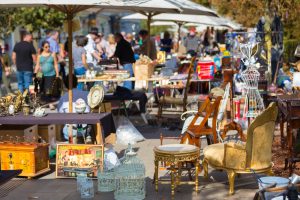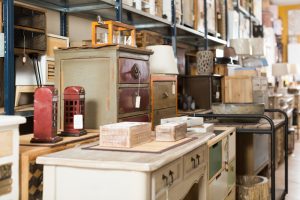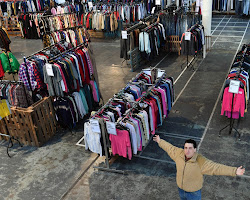DO YOUR RESEARCH
- Do make a point to visit all your existing local flea markets before renting a booth at one. While you are there you need to take notes on what the vendors are selling and most importantly, for how much. Pay attention to the shoppers to notate what is drawing them in and then what they actually buy.
- Do go out of your way to clearly communicate with the flea markets you visit. In your notes you can list the contact person, booth rental prices, merchandise rules, approval process, legal and tax requirements, and then whether or not there is actually a booth available. There’s no point in getting your heart set on a particular market if there’s a two-year waiting list and your goods aren’t approved.
- Do see how to get your booth secured close to the main entrance where Flea market shoppers tend to comb through when they first arrive. By the end of their trip when they’re running out of steam they tend to speed by with a glance as they get tired, especially at large flea markets like ours.
BE PICKY WHEN PICKING MERCH TO SELL
- Do lockdown more than one merchandise source for your sales. By doing this you can avoid the domino affect you going out of business when the one place you source from dries up and is no longer available.
- Do increase your potential profit by being very strict about the merchandise you obtain to resell. If you can’t get it at a low enough price to mark up for resale then it doesn’t matter how awesome a pick it is. If you can’t make a profit then you have to move on.
- Do pay attention to hot trends in antique and vintage decorating merchandise. If something is muy caliente and hip then you’ll surely draw shoppers into your booth to buy it.
BOOTH & MERCHANDISE SETUP
- Do get there at the earliest time vendors are allowed to arrive instead of waiting until the last minute to get your booth setup. The real deal flea market shoppers are up and ready to pounce when the doors open so you and your merchandise need to be prepared.
- Don’t take your time and hope for the best if the flea market booth spaces are not assigned ahead of time. Make sure to be the first in line to get a space near the entrance.
- Do invest in a pop-up canopy tent to help shelter your booth. It will pay off in the end as it helps you stand out visually from the vendors on either side of you especially if you opt for a bright color. In the Miami, Florida heat it will also be highly appreciated by both you and your shoppers when it acts as a nice shady break from the sun.
FACETIME WITH CUSTOMERS
- Do not get worked up or offended when shoppers try to haggle with you. Remember that they know most Flea Market Vendors will mark up the merchandise to allow for it and that it’s sometimes considered part of common flea market culture. Keep your cool by knowing you are in control in the end and that you ultimately have the power to say what goes.
- Don’t hover around and bother shoppers as they browse your booth. It’s too invasive and pushy and can come off to shoppers that you think they are attempting to steal from you. Do yourself a favor and listen to what they actually say and pay attention to nonverbal body language to recognize when they want to chat and when they want to be left with their thoughts. They can’t picture it in their house if you’re distracting them!
ENHANCE FLEA MARKET MARKETING
- Do make sure to setup a way to accept both cash and credit cards if possible. Although most will carry cash, there’s still a chance to miss a sale if the shopper only has plastic! These days, you can do it via your smartphone device even if the booth doesn’t have electricity. The easier you make it for shoppers to buy, the more they’re likely to spend, especially if you sell big-ticket items like furniture.
- Do go out of your way build your own loyal customer base instead of depending only on the flea market traffic. It is very easy to start advertising your booth with social media platforms like Facebook, Pinterest, Google+, and Instagram. Make sure to connect with the Flea Market’s profiles as well and interact with their page to help get the attention of built in customers. In between shoppers take a moment to take a fun photograph of your merchandise or a selfie with your booth in the background, preferably with that bright pop-up tent as a landmark!














